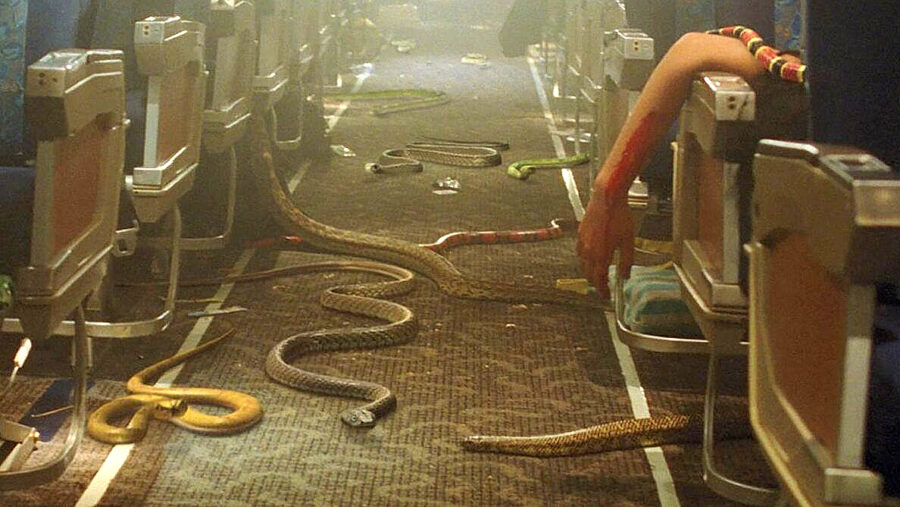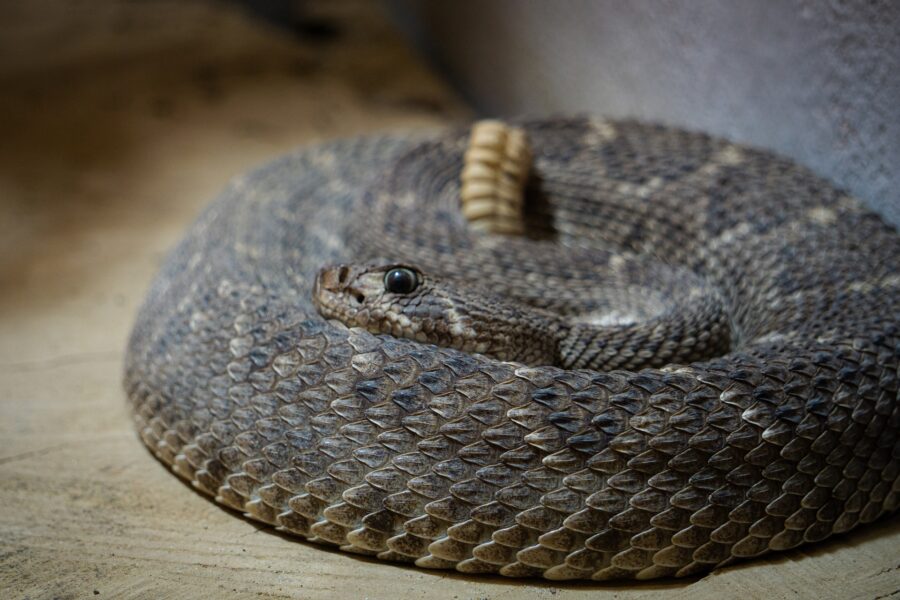Engineers Are Struggling To Rid Planes Of Snakes
Someone call Samuel L. Jackson! Engineers need to get snakes off of a bunch of planes!
This article is more than 2 years old

Someone get Samuel L. Jackson off the set of Secret Invasion! Along with all the other ways the COVID-19 pandemic has changed our lives, it’s created a real life Snakes on a Plane situation. In the California desert, aircraft engineers are seeking to purge the reptiles from planes, and they just might need Jackson’s FBI Agent Neville Flynn to lend a hand.
Okay — in all seriousness Jackson can probably keep shooting Secret Invasion. The aircraft engineers seem to have the issue well in hand, and there have thus far been no reported incidents of passengers being killed by snakes while joining the elite Mile High Club. But the removal of snakes — along with other wildlife — from planes is a real issue, and the pandemic is partly to blame.
The Guardian reports that places in the Australian desert and California’s Mojave desert among others have been serving as storage lots since the beginning of the pandemic for international airlines like Qantas, Jetstar, Cathay Pacific, Singapore Airlines, Tigerair and more. With the world beginning to open up, many of those airlines are beginning to dust off their fleets in hopes of putting them back into service. The process is proving to be rife with unique challenges, including those presented by snakes.
The pesky reptiles have already created extra work for maintenance crews in California where dormant planes are being stored. Quantas engineering manager Tim Heywood explained to The Guardian that this past June marked rattlesnake season in the Mojave, necessitating a limited amount of innovation on their part in dealing with the snakes. Unlike the snakes in the 2006 action film Snakes on a Plane who enjoy getting into every part of the plane they can, the real life Mojave rattlesnakes prefer the warm tires of the planes’ landing gear. Maintenance crew members armed with “wheel whackers” — which are, in fact, repurposed broom handles — hit the large wheels and stomp their feet to scare off any encroaching reptiles.

As troublesome as snakes can be to humans, judging by The Guardian’s report, their impact on the dormant fleets of planes is minor compared to that of other wildlife. Earlier this year, the European Union Aviation Safety Agency warned of an “alarming trend” of problems with planes that have just been taken out of hibernation. In particular, indicators for altitude and speed have proven unreliable because of the contamination of the planes’ air data systems from foreign objects.
Rather than snakes released to murder FBI witnesses, many of these foreign objects prove to be things such as nests for birds or insects. Insect nests in particular have been causing trouble with the planes’ pitot static systems — “pressure-sensitive equipment” used to measure crucial data like airspeed. According to University of New South Wales aerospace design senior lecturer Dr. Sonya Brown, once the air data lines are contaminated with such wildlife, the lines need to be “flushed with nitrogen” to clear them.
Hopefully the process of purging the hibernating fleet of snakes and other wildlife will go smoothly. Australia lifted its international travel ban this past Monday, and more air passengers all over the world are likely to be itching for the same emotional reunions enjoyed by Australians this week, as reported by India Today.












